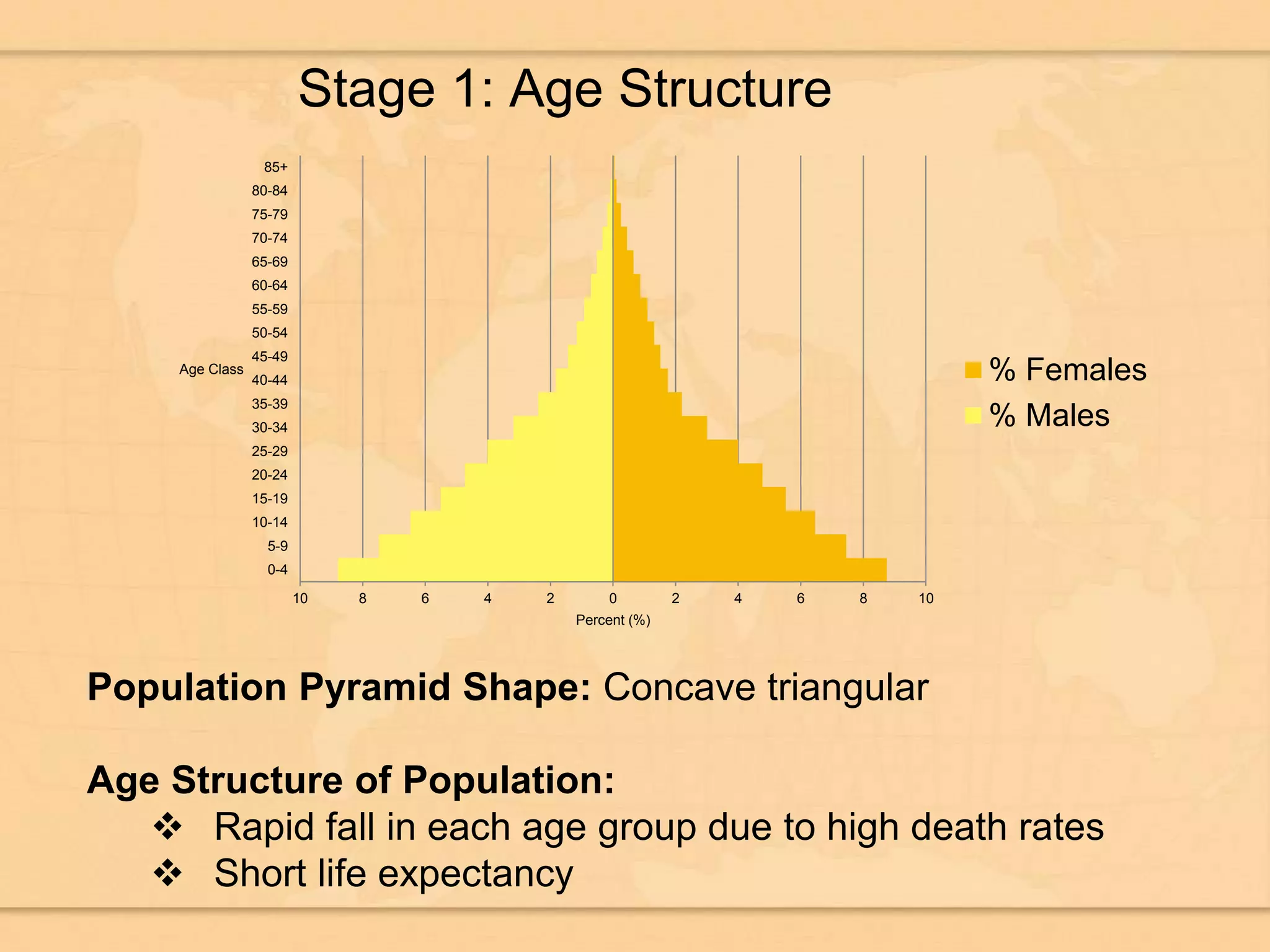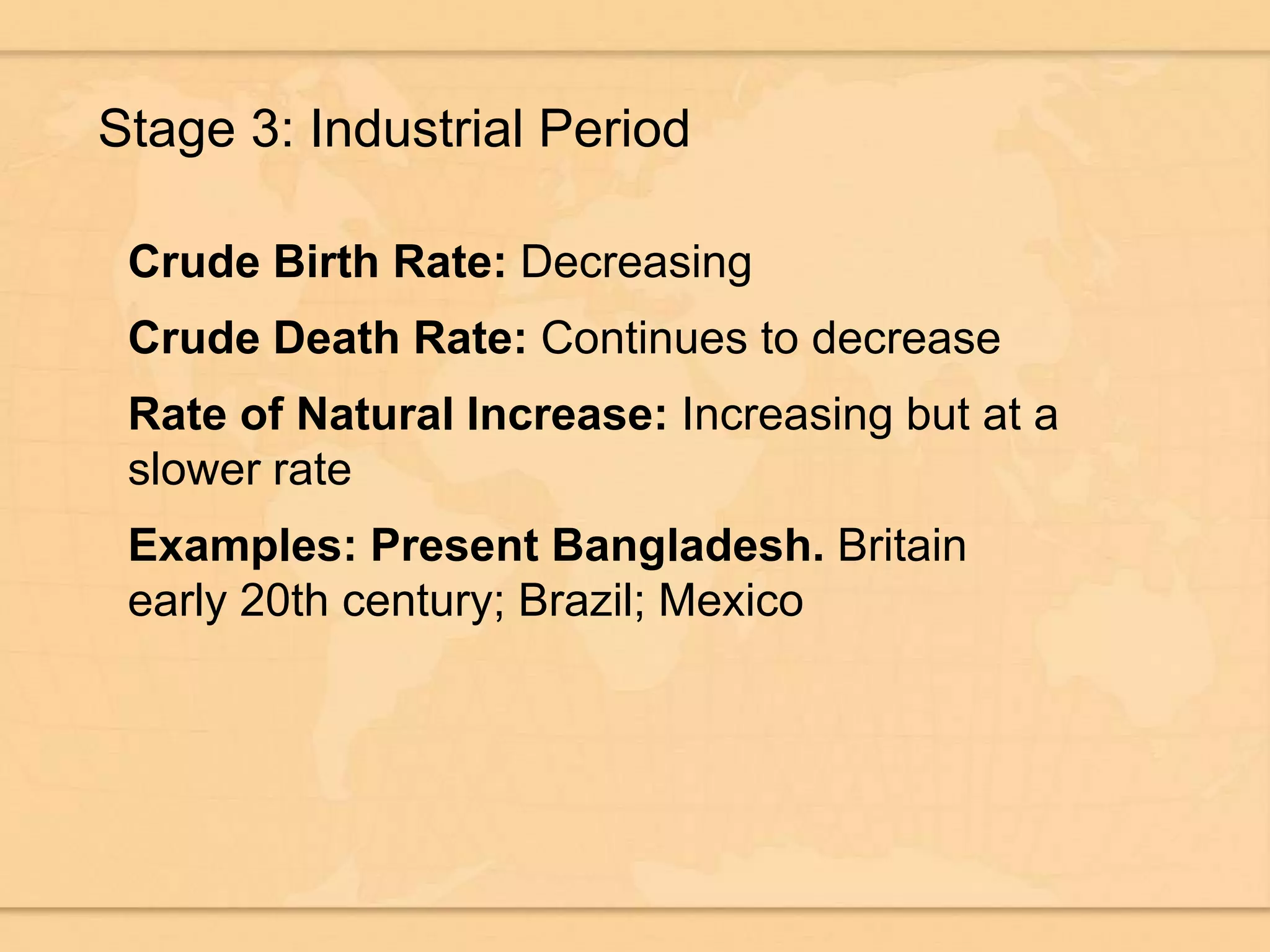This document discusses the demographic transition model and its stages as applied to Bangladesh. It begins with an overview of the 4 standard stages of demographic transition: 1) pre-industrial with high birth and death rates, 2) transitional with high birth but decreasing death rates, 3) industrialization with decreasing birth and death rates, and 4) post-industrial with low birth and death rates. It then applies these stages to Bangladesh, noting it is in stage 3. The document outlines challenges Bangladesh may face as a result of its demographic transition, such as education, health services, nutrition, housing, and women's status. It stresses the need to prepare for changes brought on by demographic transition.






























